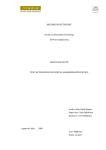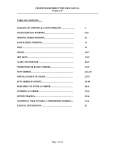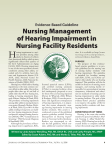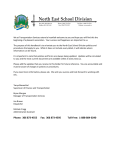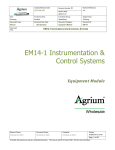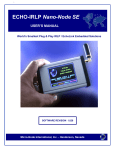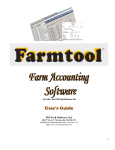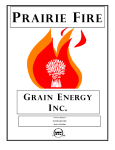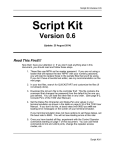Download MEEWASIN AMATEUR RADIO SOCIETY Repeater User Manual
Transcript
MEEWASIN AMATEUR RADIO SOCIETY Repeater User Manual 2007 Edition (v1.1a) VE5SKN / VE5CC TABLE OF CONTENTS Section 1.0 Introduction 1 Section 2.0 History 1 Section 3.0 3.1 3.1.1 3.1.2 3.1.3 3.1.4 3.1.5 3.1.6 3.2 3.2.1 3.2.2 3.2.3 3.2.4 Technical Information VE5SKN Repeater Repeater Information Controller Information Duplexers Weather Receiver UHF LTN Link Miscellaneous VE5CC Repeater VHF/UHF Repeater Information Controller Information Antennas Miscellaneous 2 3 3 3 3 3 4 4 4 4 4 4 4 Section 4.0 4.1 4.2 4.3 4.3.1 4.3.2 4.3.3 4.4 4.5 4.5.1 4.5.2 4.5.3 4.5.4 4.5.5 4.5.6 4.6 4.6.1 4.6.2 4.6.3 4.6.4 4.6.5 4.7 4.7.1 4.7.2 4.7.3 4.7.4 4.8 Repeater Operation General Repeater Traffic Priorities General Rules of Operation Control Operators Interference Daily Operations Repeater Access VE5SKN Special Features DTMF Test Time of Day Signal Test Weather Information LTN Link (To VE5CC Hub) Telephone Interconnect IRLP Operation (General) IRLP Error Messages Node to Node Calling Procedures Point to Point Calling (LINK) Reflector Calls Identifying & Pauses Special IRLP Codes Check Node Status Disconnect Any Node/Reflector Disable Timeout Echo Reflector IRLP Examples 4 4 5 5 5 5 5 6 7 7 7 7 7 7 7 8 8 8 9 10 11 11 11 11 11 11 11 4.9 IRLP Code Reference 12 Section 5.0 5.1 5.2 5.3 SAME Weather Alert General Alerts Environment Canada Weekly Test 12 12 13 14 Appendix A Summary of Available Codes 15 Appendix B Glossary Of Terms 16 Appendix C System Administrator Code List 17 Appendix D Saskatchewan IRLP System 18 Appendix E Saskatoon Area Repeater Network 20 Section 1 - INTRODUCTION Welcome to the 2007 edition of the Meewasin Amateur Radio Society’s Repeater User Guide. The first draft of this manual was created in 2001 after the code plan got so complex that we had to come up with some sort of documentation for users. This version will differ in that it won’t encompass a lot on IRLP codes as they are all readily available on the internet in the public domain. The 2001 version was mostly based around IRLP as there were only a handful of nodes in existence. If you see any way that this manual can be improved, make sure you contact the MARS Repeater Committee to offer your suggestions. Enjoy your VE5SKN operating experience! Section 2 - HISTORY Derek Bereza, VE5SD, formed the Meewasin Amateur Radio Society back in the early 1990’s. At that time Derek had thought that VE5UFO would be a neat call sign to have for a club and MARS would be an appropriate acronym. The next task was to come up with a name using the acronym. That is when Meewasin Amateur Radio Society popped into his head. After some research, it was discovered that Meewasin was a Cree word, which meant “happy or beautiful meeting place.” (As a note the river valley in and around Saskatoon is looked after a group called the Meewasin Valley Authority and that is where he first heard the name). During that time Derek had established a repeater system that had HF remote base and a few other neat gadgets. VE5FUN was the repeater call sign, and the HF call sign would be VE5UFO. The repeater (VE5FUN) operated on a 2.65 MHz split, receiving on 147.985 MHz and transmitting out on 145.290 MHz. The membership to the group was free, and a number of hams joined in on the fun. Due to some malicious interference and change in interests the repeater was taken off of the air. In the winter of 1998 - 1999 Derek noticed that Link Comm came out with an upgrade to their RLC-l repeater controller and ordered the MEEWASIN AMATEUR RADIO SOCIETY INC REPEATER USER MANUAL v1.1a COPYRIGHT 2007/2008 ALL RIGHTS RESERVED PAGE 1 upgrade. Around midnight January 1st the repeater was back on the air. The club was rejuvenated to bring back the collective fun, to promote fellowship in amateur radio, and to further the hobby in the Saskatoon area. The group will undertake various social, technical, and community activities and will organize and undertake work groups to help out with antenna, tower, radio and computer work projects. In the spring of 2000, the club membership of approximately 27 hams decided that it was time to incorporate and have formal structure as this would allow the club to have liability protection as well as other benefits of a nonprofit corporation. On April 4/2000, the club became the Meewasin Amateur Radio Society Inc. From about 2004 to 2007, club activities were fairly minimal. In 2001 the club hosted the Saskatchewan hamfest to raise some funds for our ongoing repeater projects. The hamfest was successful and the club did raise quite a bit of money. In 2005, the club partnered with the Saskatoon Amateur Radio Club to host the Saskatchewan Centennial Hamfest in Saskatoon. Although there was no money earned, in fact, we just broke even, we put on a ten thousand dollar event and it was very enjoyable. At the 2006 AGM, we decided that we had been using junk for far too long to run our repeater system, so much so that in fact, Derek had been using his own equipment for the last while just to keep things on the air. With a change in family priorities and lack of anyone inclined to take on any of the technical aspects of the repeater system, it was decided that we research a new system. In 2007, we purchased a brand new Kenwood TKR-750 repeater system, off the shelf, with all the bells and whistles. This paired up with the Arcom RC-210 controller the club has owned for years very nicely. MEEWASIN AMATEUR RADIO SOCIETY INC REPEATER USER MANUAL v1.1a COPYRIGHT 2007/2008 ALL RIGHTS RESERVED PAGE 2 We also partnered with ARES Saskatoon who purchased a Computer Automation Technology CAT WX-200 SAME weather receiver to use for the project. In August 2007, we finished the testing and programming phase of the project and the repeater was installed at St. Pauls Hospital, replacing the aging VE5SCA 146.940 (-600) repeater, that Eric Quiring VE5HG had operating there for decades. Plans for the future include new equipment for the VE5CC site, and possible expansion to Stranraer VE5UB and the Battlefords. The intent is to get the Local Terrestrial Network (LTN) back to the way it used to be 10 years ago. Section 3 - TECHNICAL INFORMATION 3.1 3.1.1 VE5SKN Repeater 146.940 (-600) PL 100.0Hz Repeater Information Kenwood TKR-750 (v.2) @ 25 Watts • PC Programmable • 100% duty at 25W (MAX O/P 50W) • 100.0Hz CTCSS 3.1.2 Controller Information Arcom RC-210 3 Port Controller • PC programmable • DVR • Synthesized Speech 3.1.3 Duplexers Sinclair F-150-4M • 4 Cavities 3.1.4 Weather Receiver CAT WX-200 SAME Receiver • 48 Region Coverage • PC Programmable • Logging Function • Alert Test Function MEEWASIN AMATEUR RADIO SOCIETY INC REPEATER USER MANUAL v1.1a COPYRIGHT 2007/2008 ALL RIGHTS RESERVED PAGE 3 3.1.5 UHF LTN Link Motorola CDM 1250 UHF Mobile • PC Programmable • 20 Watts Output • Max 45W 3.1.6 3.2 3.2.1 Miscellaneous • Alinco Power Supply • Emergency Power VE5CC Repeater 146.970 (-600)Owned by VE5HG VHF/UHF Repeater Information • 3.2.2 General Electric Exec II Radios Controller Information • • Link Communications RLC-1 Two ports 3.2.3 Antennas • Sinclair 210-C4 (VHF) • Sinclair 2 bay folded dipole (UHF) @ 300’ 3.2.4 Miscellaneous • Samlex 22 amp power supply • Heliax feedlines Section 4 – REPEATER OPERATION 4.1 General The MARS repeater system is open to all licensed amateur radio operators. The club requires all operators to be courteous and to use proper operating practices at all times. Most equipment is owned and operated by the Meewasin Amateur Radio Society, but some is owned by individuals. MEEWASIN AMATEUR RADIO SOCIETY INC REPEATER USER MANUAL v1.1a COPYRIGHT 2007/2008 ALL RIGHTS RESERVED PAGE 4 4.2 Repeater Traffic Priorities 1. 2. 3. 4. 5. Emergency Traffic/ARES Saskatoon Priority Traffic/ARES Saskatoon System Testing and Maintenance Public Service and Scheduled Nets General Use 4.3 General Rules of Operation 4.3.1 Control Operators ¾ Let control operators handle interference problems and repeater rule enforcement. There may be actions taking place that you are not aware of. ¾ Control Operators have the authority and responsibility to alter the rules of operation to meet temporary requirements. ¾ Control Operators may terminate an auto patch, link, QSO, or shut the repeater off at any time they believe an illegal or unauthorized action is taking place. 4.3.2 Interference ¾ Do not acknowledge transmissions from unlicensed stations or stations causing interference. To the extent possible, continue your conversation as if the interfering station is not there. ¾ Do not discuss interference on the radio. ¾ When you hear interference on the repeater, contact a control operator by telephone. Be prepared to report the time, location, signal strength and type of your antenna. Assistance in locating or identifying interfering stations is welcome. 4.3.3 Daily Operations ¾ Use your call sign rather than “break” to enter an ongoing QSO. “Break Break” indicates emergency or priority traffic. Immediately relinquish the frequency when you hear “break break.” Failure to do so immediately may lead to loss of your repeater privileges and make you a likely candidate to be shot at sunset. ¾ If someone uses “break” to enter a QSO, don’t chastise him or her. In some areas this is acceptable. MEEWASIN AMATEUR RADIO SOCIETY INC REPEATER USER MANUAL v1.1a COPYRIGHT 2007/2008 ALL RIGHTS RESERVED PAGE 5 ¾ Always wait for the courtesy tone before transmitting. In cases where there is no courtesy tone active, then pause for at least 2 seconds before keying up. The only cases this does not apply to is if you are in HF remote QSO or an auto patch call. ¾ QSO’s that are extended in length are not frowned upon on this repeater system. The only stipulation is that if you are involved in a long rag chew/round table, you should pause often and ask if anyone needs the use of the repeater or if anyone would like to join in on a QSO in progress. Do keep in mind though that not all people will jump in even if they require the auto patch or another feature. Some people are shy operators. ¾ Use proper phonetics when identifying yourself rather than inventing your own. ¾ Be a courteous operator, and lead by example. 4.4 Repeater Access The VE5SKN repeater operates on a normal (–600) KHz split like other amateur repeaters. INPUT 146.340/OUTPUT 146.940 The repeater requires a continuous tone coded squelch system (CTCSS) of 100.0Hz. The repeater also transmits a 100.0Hz tone which is there to provide users additional convenience. If you have a CTCSS decoder on your radio and enable it for 100.0Hz, then your radio squelch will not open unless that tone is received. You can put your radio by a computer or in another high RF environment and the squelch will not open up. No more noisy radios downtown! Also, the way the repeater is programmed, the CTCSS tone stops transmitting at about 1.5 seconds into the 6 second hang timer after the courtesy tone, therefore it will signal to your radio to shut down the receiver before the carrier drops, which means you don’t hear squelch or tail crashes at all. It sounds more like a commercial radio system! MEEWASIN AMATEUR RADIO SOCIETY INC REPEATER USER MANUAL v1.1a COPYRIGHT 2007/2008 ALL RIGHTS RESERVED PAGE 6 4.5 VE5SKN Special Features NOTE: For the purposes of this section, the bracket “<” means key your PTT, and “>” means un-key. There are several special functions programmed into the repeater controller. These are as follows: 4.5.1 DTMF Test Enter <710NNNN>, where “N” is any digit, to find out if your tones are accepted by the controller. The repeater will speak back the tones you entered. 4.5.2 Time of Day Enter <712> to hear the current time of day. 4.5.3 Signal Test Enter <714>. give an audio audio will be signal sounds 4.5.4 When the controller says “READY”, key up and transmission. Then when you un-key, your played back giving you an idea of what your like into the repeater. Weather Information Enter <716> to activate the WX-200 weather receiver. To turn it off, enter <717> or wait for the three minute timeout timer to disconnect it. 4.5.5 LTN Link (To VE5CC Hub) To bring VE5SKN onto the LTN, enter <500*>. You will hear a voice identification notifying you that the link is on. To turn the link off, enter <501*>. 4.5.6 Telephone Interconnect The VE5SKN system is capable of auto-patching, however at this time there is no phone line available. The manual will be updated should this change. MEEWASIN AMATEUR RADIO SOCIETY INC REPEATER USER MANUAL v1.1a COPYRIGHT 2007/2008 ALL RIGHTS RESERVED PAGE 7 4.6 IRLP Operation (General) The IRLP system is not connected directly to VE5SKN, therefore it is important to know how to make and understand that connection to proceed. The VE5CC IRLP Node is linked through the LTN to the VE5CC UHF hub repeater. The connection between these two sites is live all the time, and does not need to be turned on or off. In order to connect to the node, the VE5SKN repeater must first be connected to the LTN using the <500*> command. Once this link is established, simply use the four digit IRLP linking codes to connect to whatever other node you want to talk to. The VE5CC 146.970 (-600) repeater is connected full time to the IRLP system and the LTN. To use IRLP from this repeater, simply dial the appropriate IRLP code. To connect to VE5SKN from VE5CC, dial <500*> to connect and <501*> to disconnect. 4.6.1 IRLP Error Messages Busy signal — much like a telephone busy signal, when you hear this it means that the node you are trying to call is already connected to another or there is local traffic and it won’t permit the connection. Simply wait a few minutes and try again. You may also receive the message “The node you are calling is currently connected to XXXX.” “The node you are calling does not exist” — This error message means you have entered an incorrect code to access the system. At times if the code you have entered really IS a valid code, it means that node is offiine for whatever reason. “The node you are calling currently has internet linking disabled” — means exactly what it states. The node operator has disabled the node for whatever reason. “An Error has occurred. The call attempt has timed out, the connection has been lost, please check the code and try MEEWASIN AMATEUR RADIO SOCIETY INC REPEATER USER MANUAL v1.1a COPYRIGHT 2007/2008 ALL RIGHTS RESERVED PAGE 8 again.” This means that either the node you called is down or there is a local internet problem. There are a few other error codes that are seldom heard, but in most cases are self explanatory. Please contact the repeater committee if you encounter any other errors that are not listed in this section. 4.6.2 Node to Node Calling Procedures When making calls with the IRLP system, you need to connect to the LTN as noted in s.4.6. In the following example, we connect to the VE7RHS repeater in Vancouver. 1. 2. 3. 4. 5. 6. 7. 8. 9. 4.6.3 Identify that you are accessing the repeater. Identify, and connect to the LTN, <500*>. Identify, and enter the on code for VE7RHS which is <1000>. Wait for voice acknowledgment that you have activated the link. Pause for ten seconds so that you don’t interrupt a conversation already in progress. Make your call. When finished, identify that you are accessing the repeater and enter the universal off code for which is <73>. Identify and enter the disconnect code for the LTN, <501*>. Identify as clear. Point to Point Calling on a linked system When making a call into a linked repeater system, use the following example where we connect to VE6OIL in Calgary: 1. 2. 3. 4. 5. 6. Identify that you are accessing the repeater. Connect to the LTN, <500*>. Enter the on code for the SARA Network which is <1260>. Wait for voice acknowledgment that you have activated the link. Pause for ten seconds so that you don’t interrupt a conversation already in progress. Remember, the SARA network is province wide in Alberta. Identify that you are accessing VE6OIL and enter the on code <660*>. MEEWASIN AMATEUR RADIO SOCIETY INC REPEATER USER MANUAL v1.1a COPYRIGHT 2007/2008 ALL RIGHTS RESERVED PAGE 9 7. 8. 9. 10. 11. Wait for acknowledgement from VE6OIL that the link has been activated. Make your call. When finished, identify that you are deactivating the link and enter the off code for VE6OIL which is <661*>. Identify that you are deactivating the SARA node and enter the universal off code which is <73>. Wait for voice acknowledgement that you have successfully disconnected, then disconnect from the LTN, <501*>. Once again, when using other repeater systems, make sure to pause often as you may be interrupting a conversation in progress. Although you may not hear anything instantly when connecting, there may have been a lull in the current conversation. 4.6.4 Reflector Calls The packet reflectors were designed for net purposes. There are many reflectors on the system, each designed to handle many connections at a time. This enables us to conduct system wide nets and other potential emergency uses. We can put our repeater on the reflector, but we are not able to put anyone else’s repeater on the reflector remotely. It must be done locally. There are some provisions for Saskatchewan ARES Personnel and net controllers to bring up nodes remotely through the internet but is not in place for casual use. When using a reflector, it is important to note that there is an extra delay present that there wouldn’t be when using point to point calling. Ensure you key your microphone for two full seconds before speaking to ensure your transmission is heard through the whole system. The VE5CC node is restricted for reflector access, in that you can only connect to the Saskatoon Reflector (9300) (any channel) or the Discovery Reflector (9010) as a backup for ARES. The connection to any other reflector may disrupt the availability of the repeater system for ARES or other priority local traffic. MEEWASIN AMATEUR RADIO SOCIETY INC REPEATER USER MANUAL v1.1a 10 COPYRIGHT 2007/2008 ALL RIGHTS RESERVED PAGE 4.6.5 Identifying & Pauses It is critical and required by law to identify before and after any contacts made through the repeater or IRLP. Remember that many ears are listening. Let’s set a good example from Saskatoon. Also, be mindful of pauses between transmissions to allow for breaks in case there is an emergency or priority message from a station. 4.7 Special IRLP Codes As noted in the previous section, there is not any prefix codes needed to control the IRLP node. There are a few other special codes that you may want or need to use. They are as follows: 4.7.1 Check Node Status Enter <00> to find out if there is a current connection to VE5CC node. 4.7.2 Disconnect Any Node/Reflector Enter <73> when you are finished your call, or to disconnect from any node or reflector. 4.7.3 Disable Timeout Enter <002> to disable the timeout prior to making your call. 4.7.4 Echo Reflector Enter <9990> to connect to the IRLP Echo Reflector. This allows you to test your audio into the system. Once connected, give a test transmission and un-key. In a few seconds, you will hear your test transmission back and be able to determine if there is a problem or not. 4.8 IRLP Examples There will be times when you are maybe away from home and want to make an IRLP call back to Saskatoon. Because the node is connected directly to the LTN, you will need to MEEWASIN AMATEUR RADIO SOCIETY INC REPEATER USER MANUAL v1.1a 11 COPYRIGHT 2007/2008 ALL RIGHTS RESERVED PAGE bring up the link to VE5SKN first. this follows: 1. 2. 3. 4. 5. 6. 7. 4.9 An example of how to do From any other node, dial 1360 to connect to VE5CC. After connection message, identify, then dial <500*>. The node will regenerate 500* and you will eventually hear the on message for VE5SKN. Make your call. Reverse order to disconnect. Dial <501*>. The node will regenerate 501* and you will eventually hear the VE5SKN goodbye message. Dial 73 from your local node and identify as clear. IRLP Code Reference For a complete list of IRLP nodes and locations, as well as other operating information on IRLP, please visit: http://www.irlp.net/ There are far too many codes and daily changes to list the information in this manual. Section 5 – SAME WEATHER ALERT 5.1 General The WX-200 weather receiver is a Specific Area Message Encoding (SAME) receiver. This simply means, is that it is able to decode digital packets transmitted over the conventional weather radio frequencies and can be programmed to only trigger alerts for specific regions. In our case, we have the following codes programmed in to the receiver: 654100 65432 65434 65521 65511 65523 65453 65441 65400 City of Saskatoon RM of Corman Park RM of Vanscoy RM of Dundurn RM of Harris RM of Hanley RM of Blucher RM of Aberdeen Martensville/Warman MEEWASIN AMATEUR RADIO SOCIETY INC REPEATER USER MANUAL v1.1a 12 COPYRIGHT 2007/2008 ALL RIGHTS RESERVED PAGE This list can be updated or changed at the direction of ARES Saskatoon. 5.2 Alerts When an alert is received by the WX-200 and it is in the list of areas we want alerts for, the following will happen: 1. A 1000Hz alert tone will be sent for approximately 3 seconds. The controller will speak “A-R-E-S ALERT. WEATHER RADIO AUTOMATIC CONNECT.” 2. The audio from the weather receiver will be played for two minutes before it times out. In test mode, this has been confirmed as an adequate amount of time for most alerts to be heard. 3. At the conclusion of the two minutes, the controller will disconnect the receiver and speak “WEATHER RADIO AUTOMATIC DISCONNECT…DIAL 7-1-6 TO CONNECT.” 4. If there is a need to hear more, a user will have to manually connect to the receiver using the normal codes. 5. The receiver will not automatically send any further alerts unless they have been upgraded, such as a watch to a warning. At the conclusion of the alert time frame, which is predetermined by Environment Canada and sent with the original alert, the WX-200 will signal this to the controller, which will activate the repeater again, play a 3 second 1000Hz tone, and speak “WEATHER ALERT CLEAR.” This usually will happen several hours later. The WX-200 is only capable of listening to one weather station at a time and in our case, it listens to 162.550 MHz, VAR554 Saskatoon. The WX-200 does log alert information that is received, however it can only be accessed by direct computer connection. If we ever get Internet at the site, we will have this connected full time and be able to access the information remotely. MEEWASIN AMATEUR RADIO SOCIETY INC REPEATER USER MANUAL v1.1a 13 COPYRIGHT 2007/2008 ALL RIGHTS RESERVED PAGE 5.3 Environment Canada Weekly Test Environment Canada conducts a weekly test of the SAME and weather alert system at approximately noon each Wednesday. You should hear the ARES alert message followed by a brief transmission from the Environment Canada transmitter. The system will only activate for approximately a half minute then turn itself down again. No intervention is required. MEEWASIN AMATEUR RADIO SOCIETY INC REPEATER USER MANUAL v1.1a 14 COPYRIGHT 2007/2008 ALL RIGHTS RESERVED PAGE Appendix - A Summary of Available Codes 500*/501* RF Link LTN On/Off (VE5CC UHF Hub) 710 712 714 DTMF Code Test <710NNNN> Speak Time of Day Audio Test 716/717 Weather Radio On/Off 00 73 002 9990 Check Node Status Universal IRLP Disconnect Timeout Disable Echo Reflector MEEWASIN AMATEUR RADIO SOCIETY INC REPEATER USER MANUAL v1.1a 15 COPYRIGHT 2007/2008 ALL RIGHTS RESERVED PAGE Appendix B - Glossary of Terms CTCSS – Continuous Tone Coded Squelch System, a circuit used to reduce the annoyance of listening to other users on a shared communications channel and to turn on a radio’s receiver in the presence of the correct tone IRLP – Internet Radio Linking Project, a group of repeaters or simplex radios connected to computers, linked via the internet using voice over internet protocol. Local Terrestrial Network (LTN) – refers to the Saskatoon area of RF linked repeaters. PL Tone – Private Line (Motorola Trademark), simply another name for CTCSS. See CTCSS. Reflector – a computer on the IRLP system dedicated as a “conferencing” packet reflector so that any IRLP node connected to it will receive the same audio/transmissions and be able to participate in the conversation. SARA – Southern Alberta Repeater Association Specific Area Message Encoding (SAME) – a digital radio technology used by Environment Canada to trigger consumer grade weather receivers according to the information the user selects to monitor. MEEWASIN AMATEUR RADIO SOCIETY INC REPEATER USER MANUAL v1.1a 16 COPYRIGHT 2007/2008 ALL RIGHTS RESERVED PAGE Appendix - C System Administrator Code List THIS SECTION RESERVED FOR SYSTEM ADMINISTRATORS AND CONTROL OPERATORS ONLY MEEWASIN AMATEUR RADIO SOCIETY INC REPEATER USER MANUAL v1.1a 17 COPYRIGHT 2007/2008 ALL RIGHTS RESERVED PAGE Appendix - D Saskatchewan IRLP System The following nodes are active in Saskatchewan. Each node has a listing of repeaters that are connected to each node via link. Some repeaters may require that you turn them on with their access codes. This can only be accomplished through a “point to point” connection, not a reflector call. VE5CC Saskatoon REPEATER VE5CC VE5CC VE5SKN VE5DNA (1360) FREQUENCY 444.975 + 146.970 146.940 147.210 + VE5CMR Saskatoon (1330) REPEATER FREQUENCY VE5CMR 443.150 S CTCSS 100.0 CTCSS LOCATION Saskatoon Saskatoon Saskatoon Humboldt ON/OFF CODE L 502*/503* 500*/501* 580*/581* LOCATION Saskatoon ON/OFF CODE VE5BRC The Battlefords (1340) REPEATER FREQUENCY CTCSS VE5BRC 146.880 VE5BRC/1 147.240 - LOCATION North Battleford Battleford ON/OFF CODE 508*/509* L VE5AT Last Mountain (1344) REPEATER FREQUENCY VE5AT 146.850 - LOCATION Last Mountain ON/OFF CODE 960/961 VE5IOU Prince Albert (1370) REPEATER FREQUENCY CTCSS VE5IOU 146.820 100.0 VE5LAK 146.610 - LOCATION Prince Albert Christopher Lake L L VE5WM Regina (1550) REPEATER FREQUENCY VE5WM 146.880 - LOCATION Regina L LOCATION Swift Current Tompkins L L VE5SCR Swift Current (1570) REPEATER FREQUENCY VE5SCR 146.790 VE5TOM 146.670 - MEEWASIN AMATEUR RADIO SOCIETY INC CTCSS CTCSS CTCSS REPEATER USER MANUAL v1.1a 18 ON/OFF CODE ON/OFF CODE ON/OFF CODE COPYRIGHT 2007/2008 ALL RIGHTS RESERVED PAGE VE5RJM Yorkton (1710) REPEATER FREQUENCY VE5RJM 145.490 VE5SS 145.310 VE5RJM/2 147.080 + VE4BMR 147.030 VE5MDM Melville (1858) REPEATER FREQUENCY VE5MDM 147.000 VE5NIP Nipawin (2820) REPEATER FREQUENCY VE5NIP 146.790 VE5MFT 146.880 VE5FXR 146.700 VE5NDR 147.090 VE5TLK Turtle Lake (1766) REPEATER FREQUENCY VE5TLK 145.450 - MEEWASIN AMATEUR RADIO SOCIETY INC CTCSS CTCSS CTCSS CTCSS 114.8 LOCATION Yorkton Preeceville Invermay Baldy Mountain, MB ON/OFF CODE L L L L LOCATION Melville L ON/OFF CODE LOCATION Nipawin Melfort Tisdale Snowden L L L L LOCATION Turtle Lake L REPEATER USER MANUAL v1.1a 19 ON/OFF CODE ON/OFF CODE COPYRIGHT 2007/2008 ALL RIGHTS RESERVED PAGE Appendix - E Saskatoon Area Repeater Network MEEWASIN AMATEUR RADIO SOCIETY INC REPEATER USER MANUAL v1.1a 20 COPYRIGHT 2007/2008 ALL RIGHTS RESERVED PAGE























